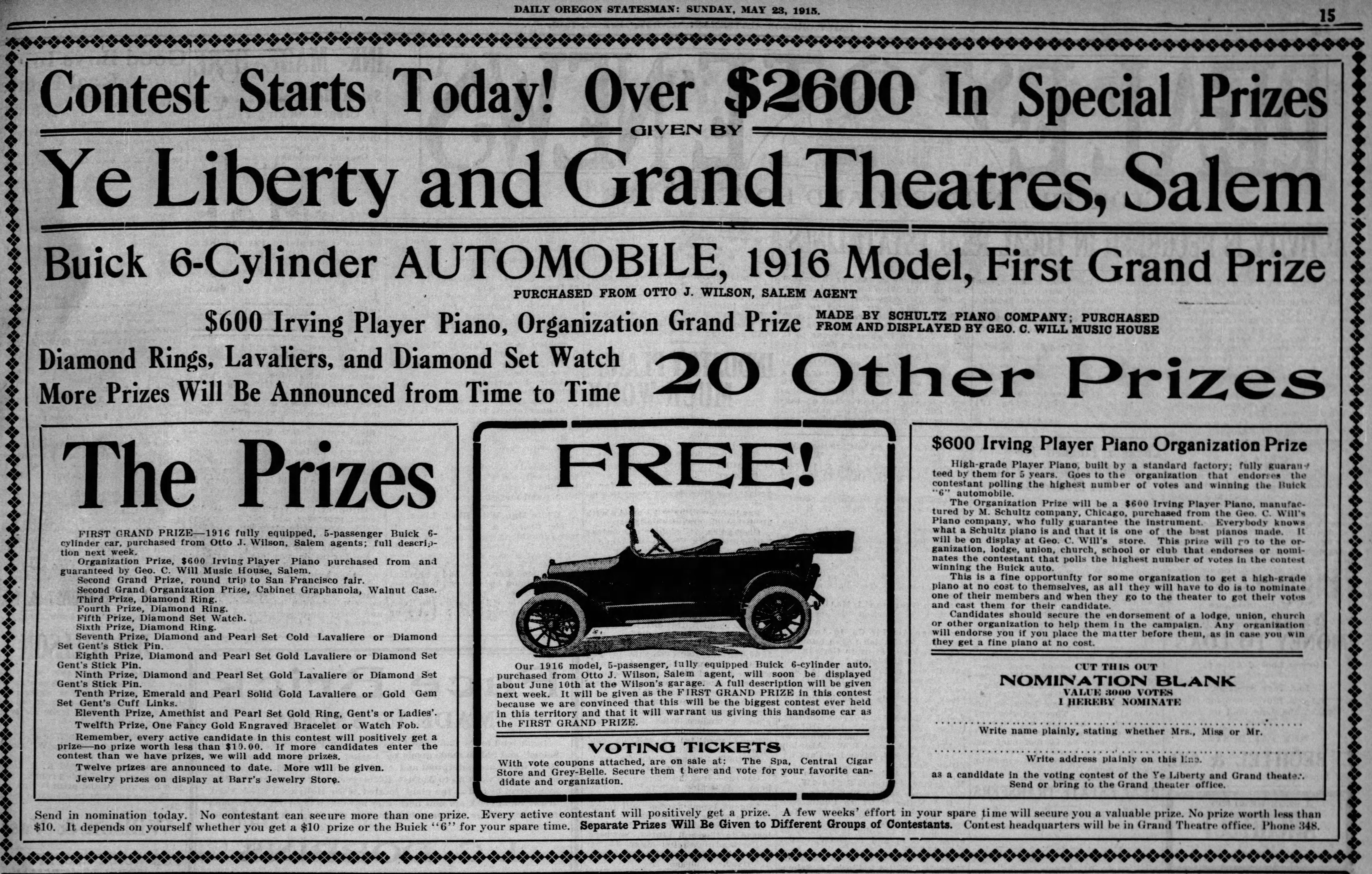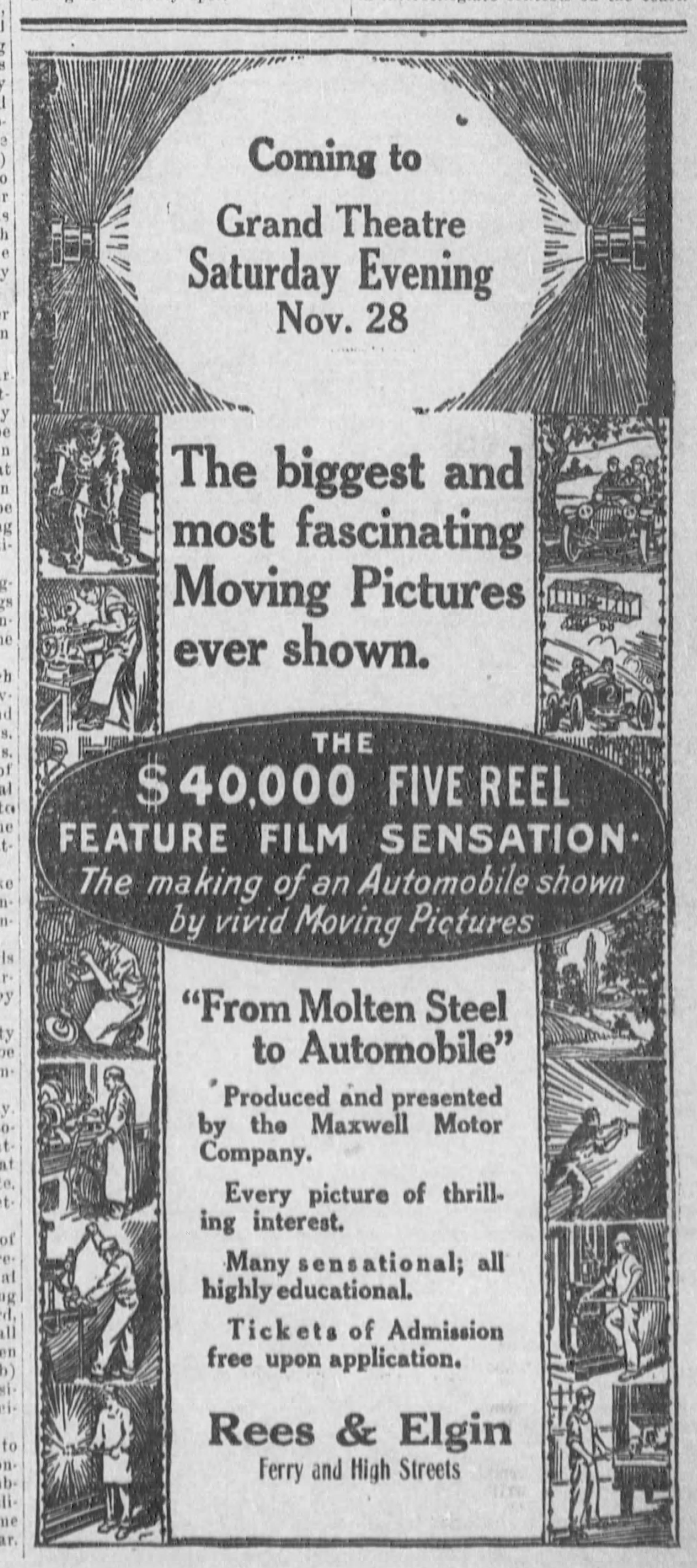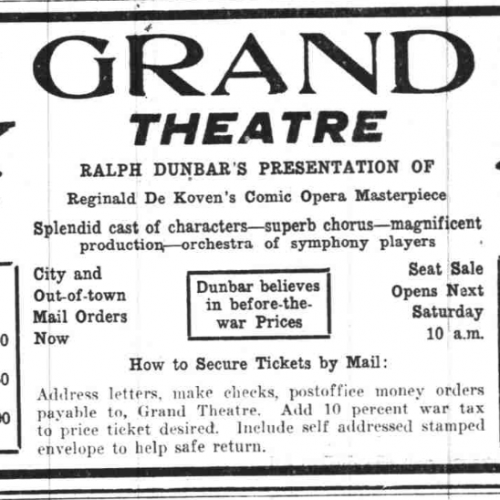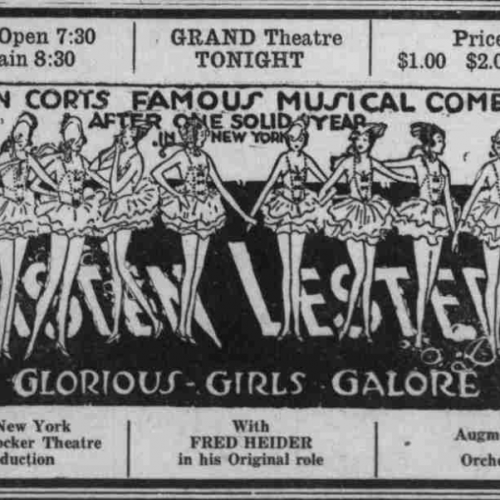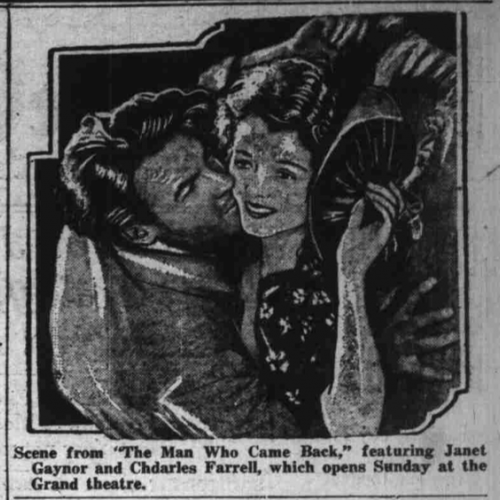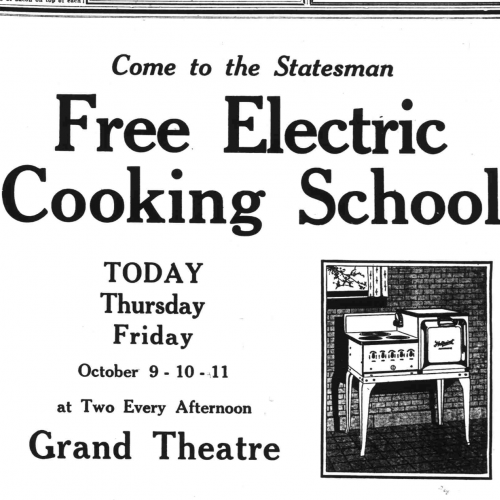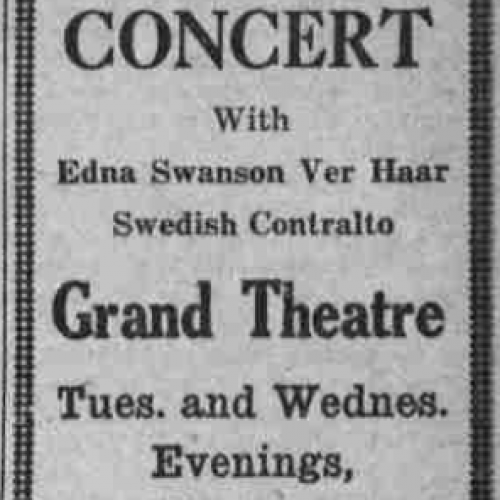The Grand theater opened on November 29, 1900, in Salem, Oregon. It was built on the corner of High and Court streets by the fraternal organization known as the Independent Order of Odd Fellows. Initially it was managed by John F. Cordray, who also operated a number of theaters in Portland, including the People's theater (1). The theater was wired for electricity when it opened, but the programming focused on primarily on live theater, musical performances, and vaudeville. Moving pictures were shown as early as 1901 when The Passion Play (1898) screened to an enthusiastic audience (2).
Later it was managed and operated by George B. Guthrie until 1925 when he sold to Portland theater maven Calvin Heilig. The theater became the Heilig for less than a year when Guthrie resumed ownership and restored the Grand name. T.G. Bligh and his son Frank owned the theater for a period before eventually selling the Grand once again to A.B. Cables. It is unclear exactly how long Cables owned and managed the theater, however a young woman known as Carole Smith purchased the theater in 2000. Similar to the theater's other owners, Smith managed and operated the Grand for around 14 years before she decided to sell to the theater's current owners of today: the Meduri family, in 2015 (11).
Unfortunately the theater is no longer exclusively that, a theater. The Grand is most commonly used today for business functions, weddings, lectures or other major events with the use of its now converted ballrooms, offices, and conference rooms. However, it still on occasion functions as a theater for performing arts entertainment featuring events such as local theater productions, movies, and concerts (3).
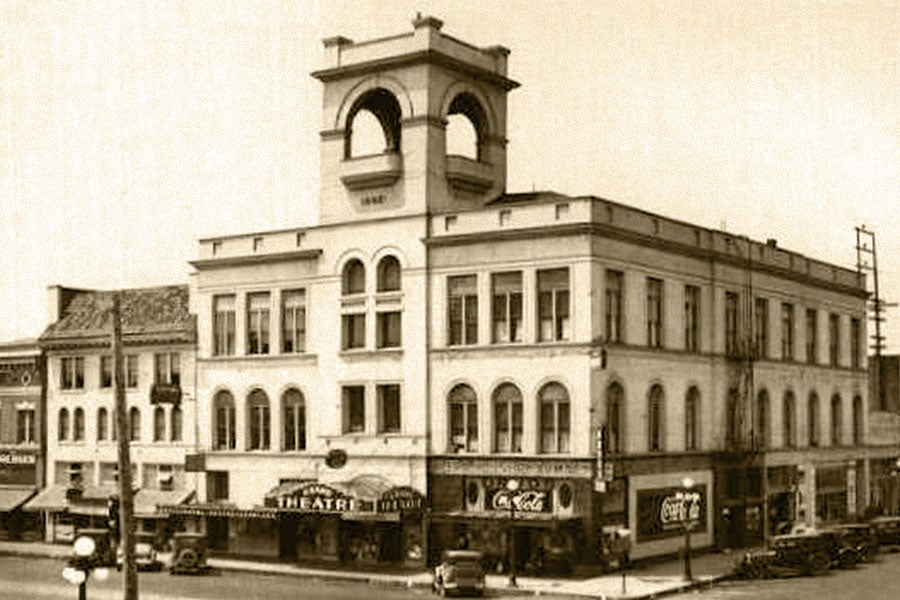
Over the Grand theater's 100-plus years in operation it has undergone several remodels including one just recently under its new management. The theater was originally built with three stories and a bell tower, however at the start of the buildings operation it was still primarily used for Independent Order of Odd Fellows business and social events.
Unfortunately the large bell tower atop the theater was lost in 1937 due to damage from a snow storm and was never rebuilt (13). The Grand acquired its signature electric sign some time in the early 1930's but was also eventually damaged by wear and tear. When the Meduri family purchased the building and conducted their remodeling in 2016, they were able to reintroduce a replica of the original to the theatre and give modern patrons an idea of what it would have been like 80 years ago (13). The physical differences in the building over the years can more clearly be seen in the photos within the article. On the left is a photo taken of the Grand in the 1920's with the presence of its bell tower and was taken before the sign was first built. The photograph in the right column depicts the Grand without its bell tower but with the electric Grand sign replica.
As most theaters featured live music during the silent era, the Grand was no different. The theater had two documented organs over the years and was also often accompanied by the Grand String Orchestra during the showings of silent films (13). Some of the many productions shown at the theater included, "The Right of Way," and John Philip Sousa's comic operetta "El Capitan" (13,14). These were just two of the very wide and diverse range of concerts put on by the Grand theater in its early years.
The Grand theater often tried to appeal to a wide variety of audiences throughout its career and that often included showgirl performances. One example was dictated in advertisement published through the Capitol Journal in 1920 announcing the "Glorious Girls Galore," a "famous musical comedy" put on by John Corts and featured an augmented orchestra, fabulous, bold costumes, and of course singing and dancing (8).
In contrast, the Grand theater also attracted many other patrons of all shapes and sizes or class and backgrounds. The Grand was known for hosting educational courses often free to the public among other charitable events during the afternoons. In addition the many office spaces were rented out, as they still are today to other businesses or organizations to host retail sales, community service, receptions, or as general gathering or meeting spaces (4,13).
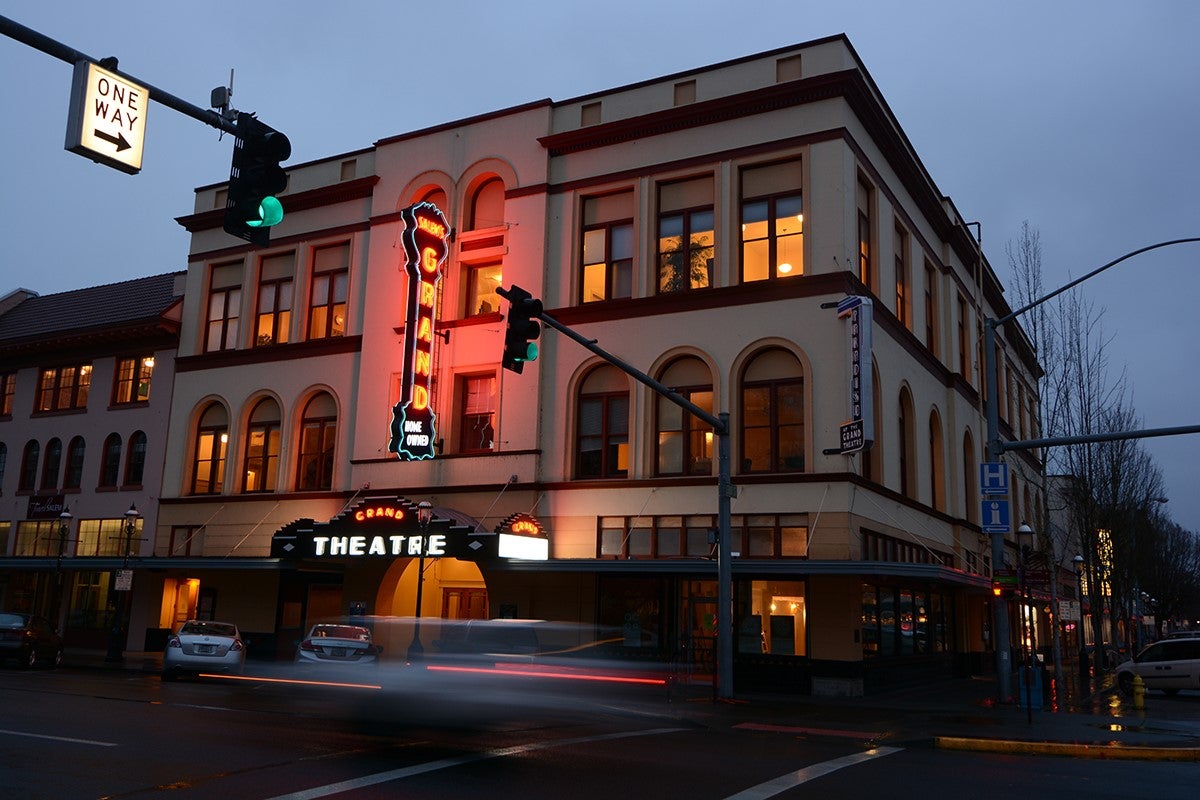
On one special occasion the Grand hosted a Robin Hood themed event to parallel their showing of the film in 1922. They released an advertisement/ coupon in the newspaper a few months prior in October of 1921. If patrons were to keep this coupon to their showing they would receive a discount on ticket sales. It was also an option to mail the ad in to the theatre and receive tickets at the door. This was an early way of incentivizing and actively involving patrons in the movie exhibiting process. Of course it is still a common practice to see similar ideas today. Offering the audience the semblance or prospect of controlling their own movie experience further drives them to remain involved and spend more money (5).
The Grand participated in advertising tie-ins with automobile companies, like this one from 1914. The Maxwell Motor Company produced a film of their steel works and car factories, and local Maxwell distributors teamed up with theaters to show the film. Maxwell either provided the film for free or paid theaters to show it, as admission was free. This film served not only to advertise Maxwell cars, but to bring an audience to the Grand for a free movie. Perhaps people not otherwise interested in films would be drawn in by the “educational” nature of the film. Increased exposure could lead to more potential audience members in the future, turning this car advertising stunt into an equally effective advertising ploy for the Grand. On this occasion in Salem, hundreds of people turned out to see the film despite inclement weather, and the next day’s newspaper declared the showing “of intense interest” (15).
Another automobile tie-in appeared in 1915, when Ye Liberty and the Grand teamed up for a giant prize giveaway. The competition was based on nominations, which had to be submitted on paper at the Grand theater office. The individual with the most nominations won the grand prize, and other prizes were offered as well. The first-place prize was a brand-new Buick, and the total value of all prizes was around $2600 (around $65,000 in 2018 dollars). This extravagant outlay of capital was probably possible due to T. G. Bligh’s involvement with the theater (he is listed as the proprietor in the 1917 Salem City Directory, though exactly what his relationship was with the theater is unclear). The value of prizes offered probably was enough incentive to draw people to the Grand’s office, with the result that the Grand would become more widely recognized among the citizenry of Salem.
